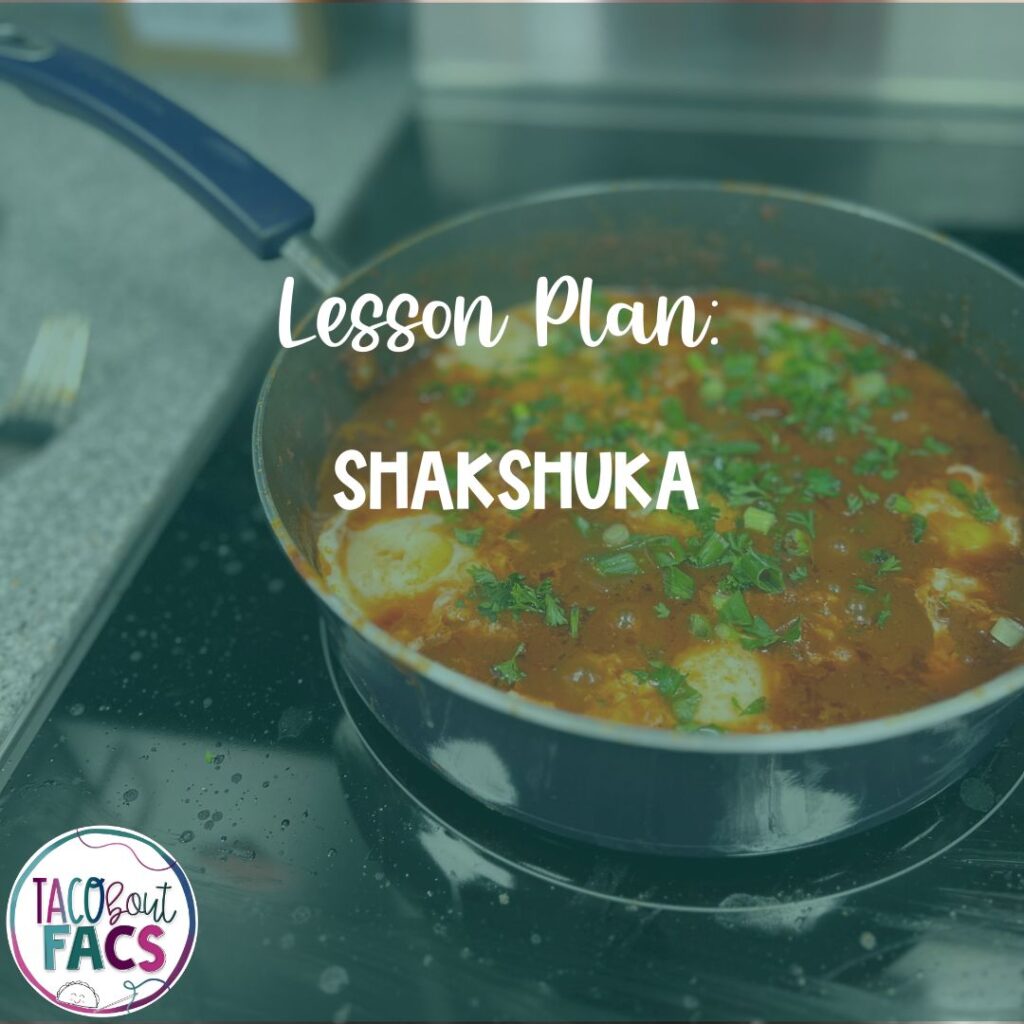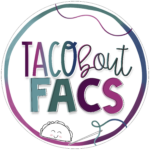It’s a Shakshuka cooking lab. Not Shaq’s shoes and also not a bad word. Shak-SHOO-Kuh. And we are practicing knife skills over here in this two-day cooking lab. Overall reviews were a well-received recipe. One boy did mention you should be a middle-aged man to like it, but an overwhelming majority said they would make or eat it again.
This year, I was able to create a new course, more of an “honors” course, for our 8th graders. These would be students who took FACS 1 in 7th and had a strong in learning more about the FACS world. This would also work well for your regular FACS classes.
This new course meant digging deeper into recipe creation and culinary skills, including adding Pitboss Sierra grills- more on that in the coming weeks.
One area I wanted to focus on was knife skills. Shakshuka was the perfect recipe for that wish.
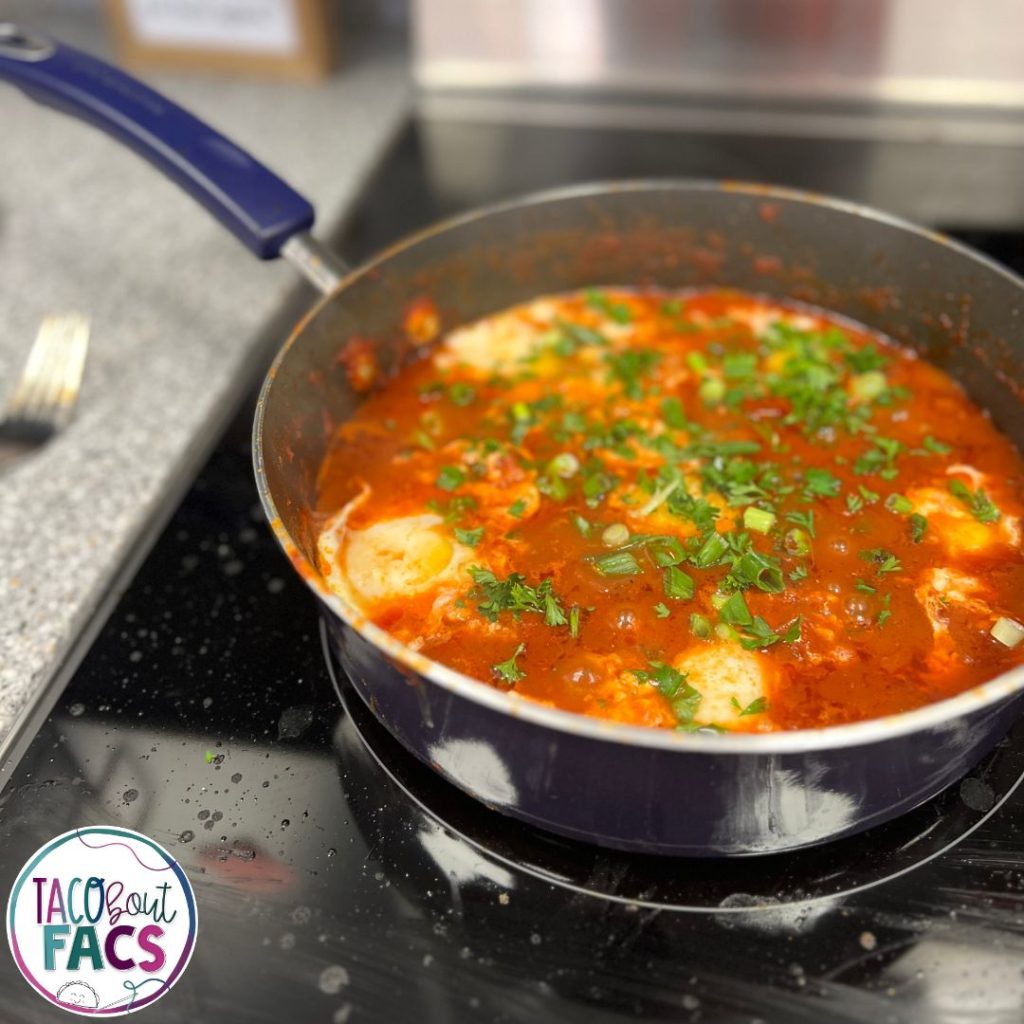
What is this Shakshuka Cooking Lab?
Shakshuka is a North African dish with many variations. There really isn’t a right or wrong way to make it. Shakshuka basically means “mixed together”. It is a tomato base with any and all vegetables and topped with poached eggs.
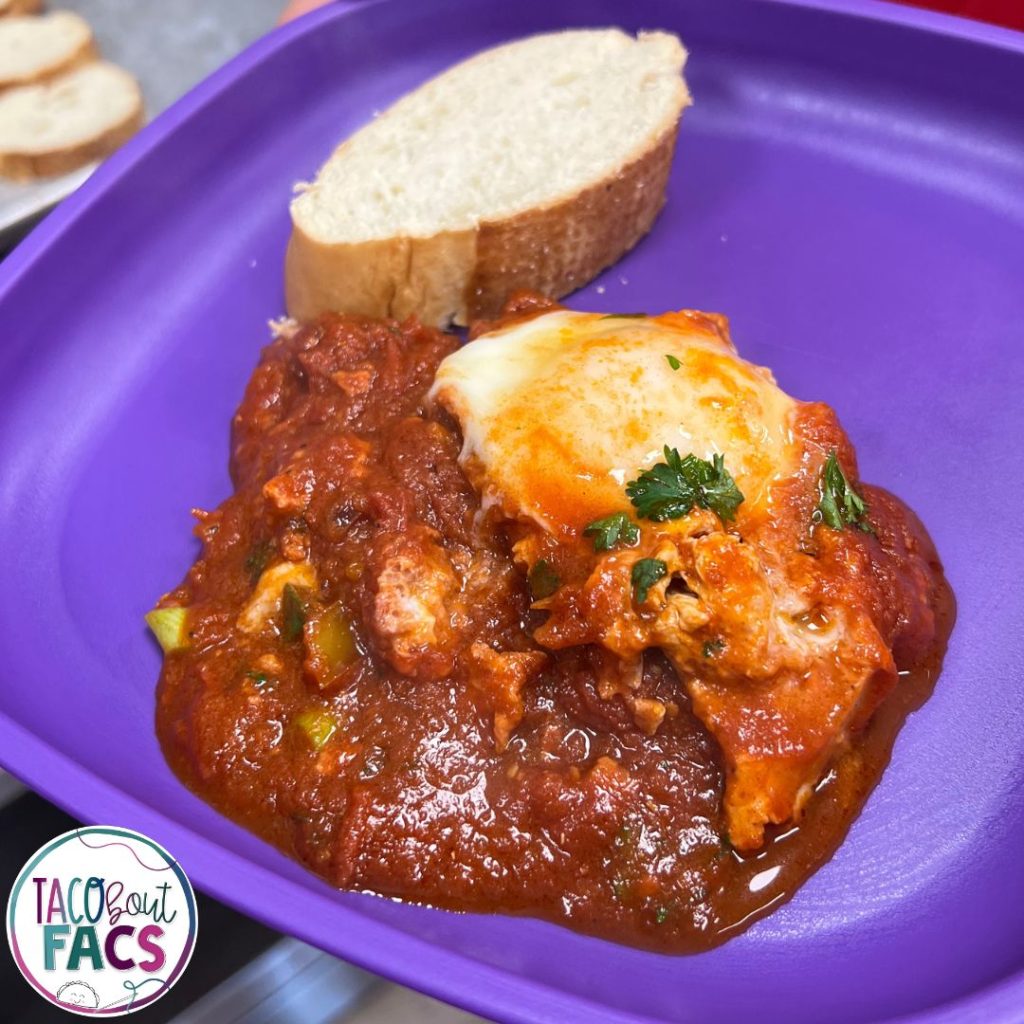
Practicing Knife Skills
Before this recipe, students practiced with plastic knives and Play-Doh to practice some of the most common knife cuts. We practiced small, medium, and large dice, julienne, chiffonade, and a few others.
One student even thanked me for such a fun lesson and for the chance to use Play-Doh. When you think something might be too simple for junior high or high school kids, it is just another reminder that we all need simple opportunities to learn while having fun. Play-Doh and plastic knives will also be a lesson I continue each semester.
For this recipe, we focused on small dicing bell peppers, poblano peppers (for a little heat, but not too much), and onions. The recipe has parsley or cilantro and green onions on top, allowing students to practice a chiffonade for the parsley and a biased cut for the green onions. And finally, mince real garlic cloves. We did, however, use canned tomatoes rather than cutting fresh tomatoes.
A Two-Day Cooking Lab
This lab took two days and then a reflection day. You can read more about what a 49-minute food lab looks like in my classroom in this blog post.
The first day was preparing the vegetables. Each of the five kitchens took its share of vegetables, but all of the chopped ingredients came back together in large bowls because let’s be real- I don’t have enough inventory for each kitchen, each hour to have their own ingredients set aside.
Day 1 prep also aligns with FACS 1 dicing peppers, onions, and deli ham for their first lab, omelets. FACS 2 students can also finish prepping any ingredients FACS 1 students didn’t have time to complete.
Day 2 is a jam-packed cooking day since the ingredients need time to saute, bring to a boil, and simmer while the eggs are cooking.
Shakshuka Success
I found out not everyone is a fan of poached eggs. Each kitchen gets a guest judge to help practice serving skills, but finding enough guest judges who didn’t mind a potentially runny egg was challenging.

If each kitchen had an overall 5 more minutes, it would have been perfect. We made it work though in a 49-minute class and served the Shakshuka with a slice or two of a toasted baguette for soaking up the sauce.
What Would I Change Next Time?
Next time, I would likely still use the 28oz. can of crushed tomatoes.
I bought several zucchini for students to add to the recipe as well, but we didn’t use all of it. Students quartered the zucchini and we could get by with one or two.
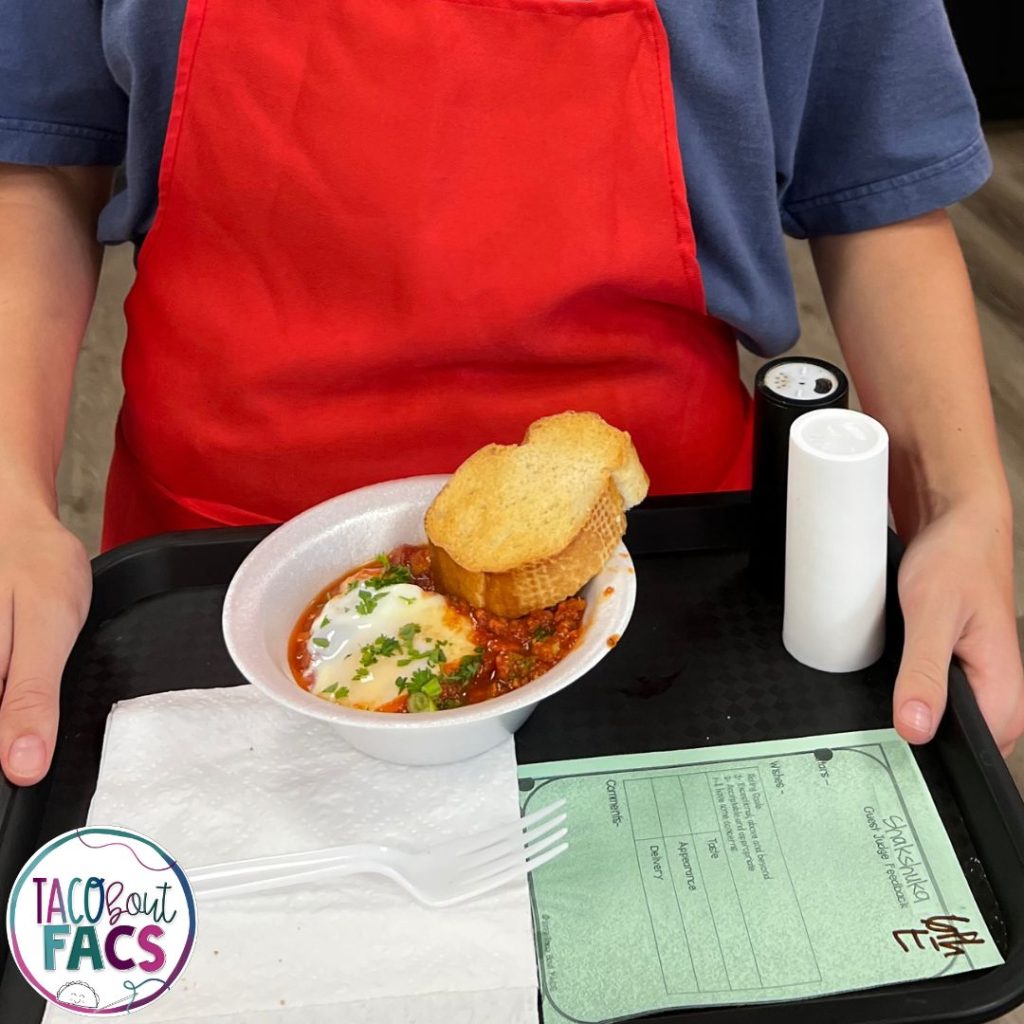
I would ask guest judges if they prefer a runny egg or a firmer yolk. That would be an added challenge for the chefs, but I think one they will gladly accept. Guest judge feedback always brings out the best in each kitchen.
If you’d like to use this recipe and use the resources, you can find it here or on TPT.
Check out several food lab resources here. Each resource covers the prep- food lab plan, recipe, guest judge ordering and feedback forms, student reflection, plus a grading rubric.

